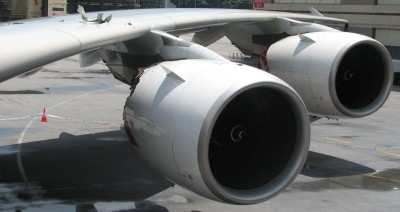Two Former Employees Have Sued The Engine Maker For Right To Release Information
A lawsuit filed by to former employees of Rolls-Royce against the engine maker is without merit, the company says, adding that a judge has already thrown out two of the four claims.

The two former employees allege that the company covered up known defects with engines that were sold to both civilian and military clients, according to a report from Reuters. The suit says that a court order prevents them from exposing potentially serious defects in the engines' manufacturing process that could cause them to fail.
A spokesman for the company said that Judge William T. Lawrence has already dismissed two of the four charges during the "discovery" phase of the proceedings, and that the company "categorically rejects" the other claims. The Judge's ruling means any jury would not be allowed to hear the allegations that have been dismissed.
The allegations trace back to an uncontained engine failure on a Qantas Airways A380 operating over Indonesia three years ago. The ATSB said Rolls-Royce failed to detect a faulty component on multiple occasions. In its final report issued June 27, the ATSB said that it found that the engine failure was the result of a fatigue crack in an oil feed pipe. The crack allowed the release of oil that resulted in an internal oil fire. The oil fire led to one of the engine’s turbine discs separating from the drive shaft. The disc then over-accelerated and broke apart, bursting through the engine casing and releasing other high energy debris.
The ATSB also found that the oil pipe, together with a number of similar pipes in other engines, had been made with a thin wall section and did not comply with the design specifications. The thin wall substantially increased the likelihood of fatigue cracking.
This investigation has been one of the more complex undertaken by the ATSB in recent years and has involved a large commitment of resources. As well as understanding how the engine failed, the investigation had to review why quality assurance did not adequately manage the oil pipe problem and what were the implications of the damage to the aircraft.

Rolls-Royce said in a news release following the report's release that it supports the conclusions of the Australian Transport Safety Bureau (ATSB) report into the failure of a Trent 900 engine on board a Qantas Airways Airbus A380 on 4 November, 2010.
"This was a serious and rare event which we very much regret," said Colin Smith, Director Engineering & Technology, Rolls-Royce. "At Rolls-Royce we continually strive to meet the high standards of safety, quality and reliability that our customers and their passengers are entitled to expect. On this occasion we clearly fell short. The robustness of the Airbus A380 and the professionalism of the Qantas crew members assured that the aircraft and all its passengers landed safely.
"We support the ATSB's conclusions and, as the report notes, have already applied the lessons learned throughout our engineering, manufacturing and quality assurance procedures to prevent this type of event from happening again."
The company said it would "vigorously defend" itself against the allegations brought by its two former quality assurance engineers.
(Images provided by the ATSB.)
 Unfortunate... ANN/SportPlane Resource Guide Adds To Cautionary Advisories
Unfortunate... ANN/SportPlane Resource Guide Adds To Cautionary Advisories ANN FAQ: Turn On Post Notifications
ANN FAQ: Turn On Post Notifications ANN's Daily Aero-Term (04.29.24): Visual Approach Slope Indicator (VASI)
ANN's Daily Aero-Term (04.29.24): Visual Approach Slope Indicator (VASI) ANN's Daily Aero-Term (04.28.24): Airport Marking Aids
ANN's Daily Aero-Term (04.28.24): Airport Marking Aids ANN's Daily Aero-Linx (04.28.24)
ANN's Daily Aero-Linx (04.28.24)




